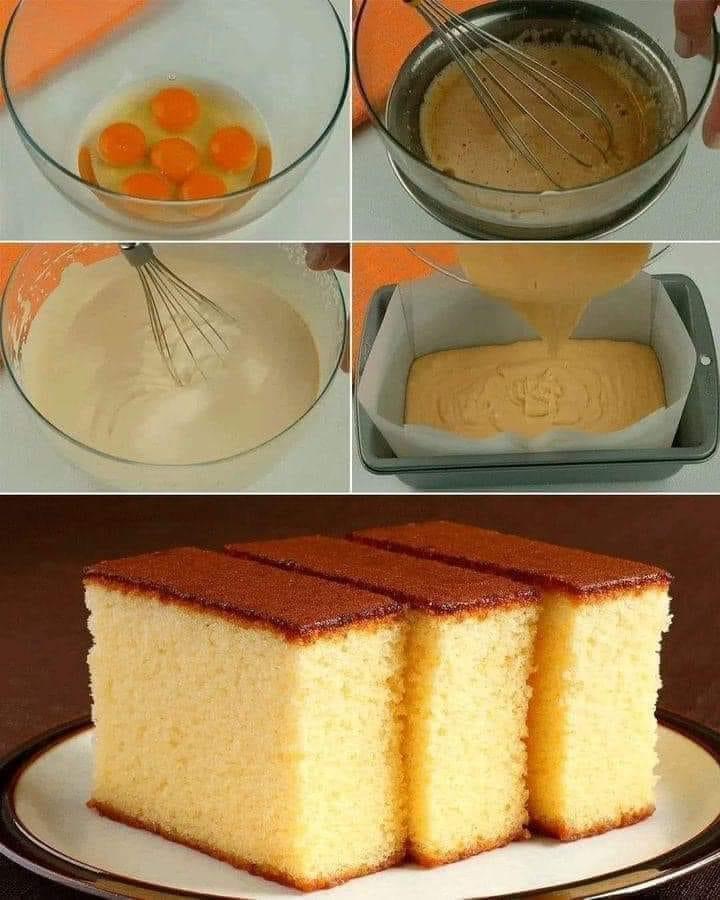Castella Cake A Delicate Delight

History
Castella cake, known as “Kasutera” in Japanese, is a popular sponge cake in Japan with a rich history that dates back to the 16th century. The cake was introduced to Japan by Portuguese missionaries who arrived in Nagasaki. The name “Castella” is derived from the Portuguese “Pão de Castela,” meaning “bread from Castile,” a region in Spain. Over time, the Japanese adapted the recipe to suit their tastes, resulting in the lighter, more delicate version enjoyed today.
Ingredients
The traditional Castella cake is made from simple ingredients, which include:
- 1 cup bread flour
- 1 cup granulated sugar
- 2/3 cup honey
- 8 large eggs
- 1/4 cup warm water
Instructions
- Preparation: Preheat your oven to 320°F (160°C). Line a loaf pan with parchment paper, ensuring the paper extends slightly above the edges of the pan. This will make it easier to remove the cake after baking.
- Separate Eggs: Separate the egg whites from the yolks. Place the egg whites in a large mixing bowl and the yolks in a separate bowl.
- Whip Egg Whites: Using an electric mixer, whip the egg whites until they form stiff peaks. Gradually add the sugar while continuing to whip, ensuring the mixture is well incorporated and glossy.
- Mix Egg Yolks: Add the egg yolks to the mixture one at a time, mixing well after each addition. The batter should be smooth and airy.
- Add Honey and Water: In a small bowl, mix the honey with warm water until dissolved. Gradually fold this mixture into the batter, being careful not to deflate the egg whites.
- Incorporate Flour: Sift the bread flour and gently fold it into the batter using a spatula. Ensure there are no lumps, but avoid overmixing.
- Bake: Pour the batter into the prepared loaf pan, smoothing the top with a spatula. Tap the pan gently on the counter to release any air bubbles. Bake in the preheated oven for 60-70 minutes, or until a skewer inserted into the center comes out clean.
- Cool and Serve: Once baked, remove the cake from the oven and let it cool in the pan for about 10 minutes. Carefully lift the cake out using the parchment paper and transfer it to a wire rack to cool completely. For the best texture and flavor, wrap the cooled cake in plastic wrap and let it rest overnight before serving.
Benefits
Castella cake is celebrated for its light, airy texture and subtle sweetness, making it a versatile dessert that can be enjoyed in various settings:
- Simple Ingredients: Made with basic pantry staples, Castella cake is accessible and easy to prepare.
- Low Fat: With no added butter or oil, it’s a relatively low-fat dessert option.
- Cultural Experience: Enjoying Castella cake provides a taste of Japanese culture and history.
Conclusion
Castella cake is more than just a dessert; it’s a piece of history that has been passed down and refined over centuries. Its delicate texture and sweet, honeyed flavor make it a favorite in Japanese households and a beloved treat worldwide. Whether you’re enjoying it with a cup of green tea or serving it at a special occasion, Castella cake is sure to impress with its simplicity and elegance.
Enjoy baking and savoring this delightful cake!